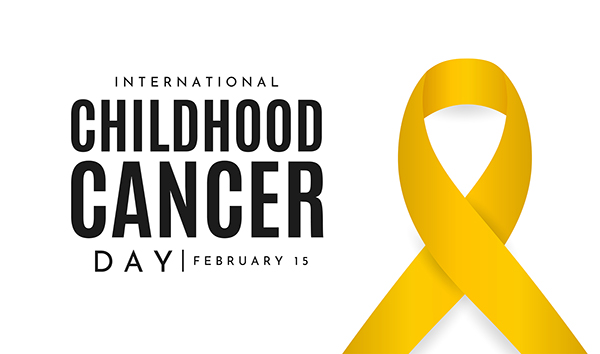
A special day called International Childhood Cancer Day (ICCD) is coming up in a couple of weeks. This holiday, held every year on February 15, is all about raising awareness of pediatric cancer and supporting the families it impacts.
International Childhood Cancer Day seeks to honor all the children and families experiencing cancer, acknowledging their difficulties. Despite the advances in medical technology, cancer is still the leading cause of death by disease for children. Not only is childhood cancer traumatic, but it also requires specialized treatment and care.
Having experienced a cancer journey with my granddaughter, Ellie, I understand how important quality care, along with research, is for the children battling cancer and their families.
The Significance of ICCD
In 2002, Childhood Cancer International (CCI) recognized International Childhood Cancer Day with a big goal: to ensure every child with cancer gets the best care, no matter where they live or who they are. This day is significant for families on a journey filled with challenges and hope.
Childhood cancer is devastating, regardless of where you live. Each year, more than 300,000 children worldwide receive a cancer diagnosis. Many of these children live in poorer countries where treatment may be unavailable or inaccessible.
In the United States, four out of five children survive cancer. In many countries, however, only one out of five children diagnosed with cancer will live. As a result, a major goal of ICCD is to prevent every child from dying from cancer, no matter where they live.
The Gold Ribbon Symbol
You might have seen a special symbol during Childhood Cancer Awareness Month in September – a gold ribbon. It’s not just any ribbon; it’s the symbol of childhood cancer awareness.
Gold represents how precious the lives of kids are, and for families facing this tough battle, it’s a symbol of strength and unity.
Understanding Childhood Cancer
Now, let’s learn a little more about childhood cancer. There isn’t just one type of cancer; there are many. Cancer can show up in different parts of a child’s body.
The most common one is leukemia, which is a type of blood cancer. But cancer can also appear in places like lymph nodes, the nervous system, muscles, bones, and skin. My granddaughter, Ellie, had a stage 3 Wilms tumor, which is a rare type of kidney cancer.
Key Statistics
Here are some important numbers from St. Jude’s Children’s Research Hospital to remember:
- Around 400,000 children around the world get cancer each year, but sadly, not all of them are diagnosed.
- Cancer is the top cause of death from a disease for kids in the United States. That’s why we’re working so hard to change that.
- Thanks to better treatments, more than 80% of kids with cancer in the U.S. now become long-term survivors. But we’re not stopping until that number is even higher!
Why Kids Get Cancer
You might wonder, “Why do kids get cancer?” Well, it’s a bit different from what happens with grown-ups.
For children, cancer is less likely to be because of things like what they eat or where they live. Most scientists think it happens by chance.
But sometimes, about 8% of the time, kids are born with changes in their genes that make cancer more likely. Understanding these gene changes helps doctors find and treat cancer better.
Treatment Options and Challenges
When it comes to treating cancer, it depends on what kind of cancer a child has. Sometimes, they need surgery, chemotherapy, radiation, or even immunotherapy. These treatments can last for a few months or even years.
But guess what? Researchers and doctors are constantly working on new ways to help kids with cancer, like precision medicine that targets the changes in the cancer cells.
The Impact on Kids
Unfortunately, these treatments can have side effects. For many, like Ellie, they can lose their hair.
Seeing my little Ellie struggle with her hair loss inspired me to create a book, Ellie The Brave, Bald Fairy. Our hope is this book will give comfort and hope to all those kids experiencing the difficult realities of cancer. In addition, I’ll donate a portion of the proceeds from sales of my book to children’s cancer research.
The Goals of International Childhood Cancer Day
ICCD, on February 15, is our day to shine a bright light on childhood cancer and support kids and their families. No matter where you are in the world, we want to ensure every child has access to the best care and lots of love. Our goals for this special day are:
- Making sure everyone knows about childhood cancer.
- Giving kids all over the world access to good healthcare.
- Helping to ease the pain.
- Providing cancer treatment to kids and teens who need it.
- Spread the word about cancer and support families like yours.
How to Get Involved
International Childhood Cancer Day is a day to honor all the brave kids and their families who are facing cancer. Even though medicine and technology have come a long way, cancer is still the top cause of death for kids beyond infancy. But together, as families and communities, we can support each other and make a big difference.
ICCD is an opportunity to make a positive impact on the lives of children with cancer. Here are some suggestions for how to make a difference this February 15:
1. Promote awareness and education
Learning about childhood cancer from reputable sources is an important starting point. If you feel comfortable, you may share what you’ve learned about detection and treatment options with friends and loved ones — through email, social media, or in person.
2. Donate
Non-profits rely on the generosity of donors to cover treatment costs and invest in childhood cancer research. Consider donating to a non-profit like St. Jude Children’s Research Hospital or the Pediatric Cancer Research Foundation (PCRF).
With donor support, St. Jude provides children with cutting-edge cancer treatments not covered by insurance at no cost to their parents. PCRF has invested over $58 million in pediatric cancer research and contributes to groundbreaking advances in treatment.
3. Volunteer
Non-profits benefit significantly from the work of their volunteers. You can bring your passion to St. Jude’s mission by volunteering to support the kids of St. Jude. Learn more about upcoming opportunities to volunteer for St. Jude near you here.
Or, you can volunteer with the Pediatric Cancer Research Foundation. They count on volunteers for their passion and generous spirit. Every hour donated is appreciated! By volunteering for one of these cancer non-profits, you’ll enjoy a sense of purpose and boost your mood.
4. Host a Fundraiser
Fundraising can be a fun and rewarding way to get your family, friends, or coworkers involved in supporting a common cause.
St. Jude offers a variety of fundraisers you can join, from school programs to fitness events to gaming challenges. PCRF fundraising events include their Reaching for the Cure half marathon, Bid for the Kids Gala, and the Will Strong Charity Golf Event. Or, you can also get creative and start your own fundraiser.
5. Offer Support
Sometimes, the best way to make an impact is simply to reach out to a family who needs support. If someone in your community has been affected by pediatric cancer, consider asking what they need and how you can help.
Your Support Matters
Whether you’re a parent, a sibling, a friend, or someone who cares deeply about these brave kids, know that your support matters. Let’s stand together and make sure every child, no matter where they are, can grow up healthy and happy. You are our inspiration; together, we can bring hope and healing to those facing this challenging journey.
“I’ve learned that no matter how difficult things seem, there is always hope. And I’ve learned that no matter how powerless we feel or how horrible things seem, we can’t give up. We have to keep going.
Even when it’s scary, even when all of our strength seems gone, we have to keep picking ourselves back up and moving forward, because whatever we’re battling in the moment, it will pass, and we will make it through. We’ve made it this far. We can make it through whatever comes next.”
― Daniell Keopke
